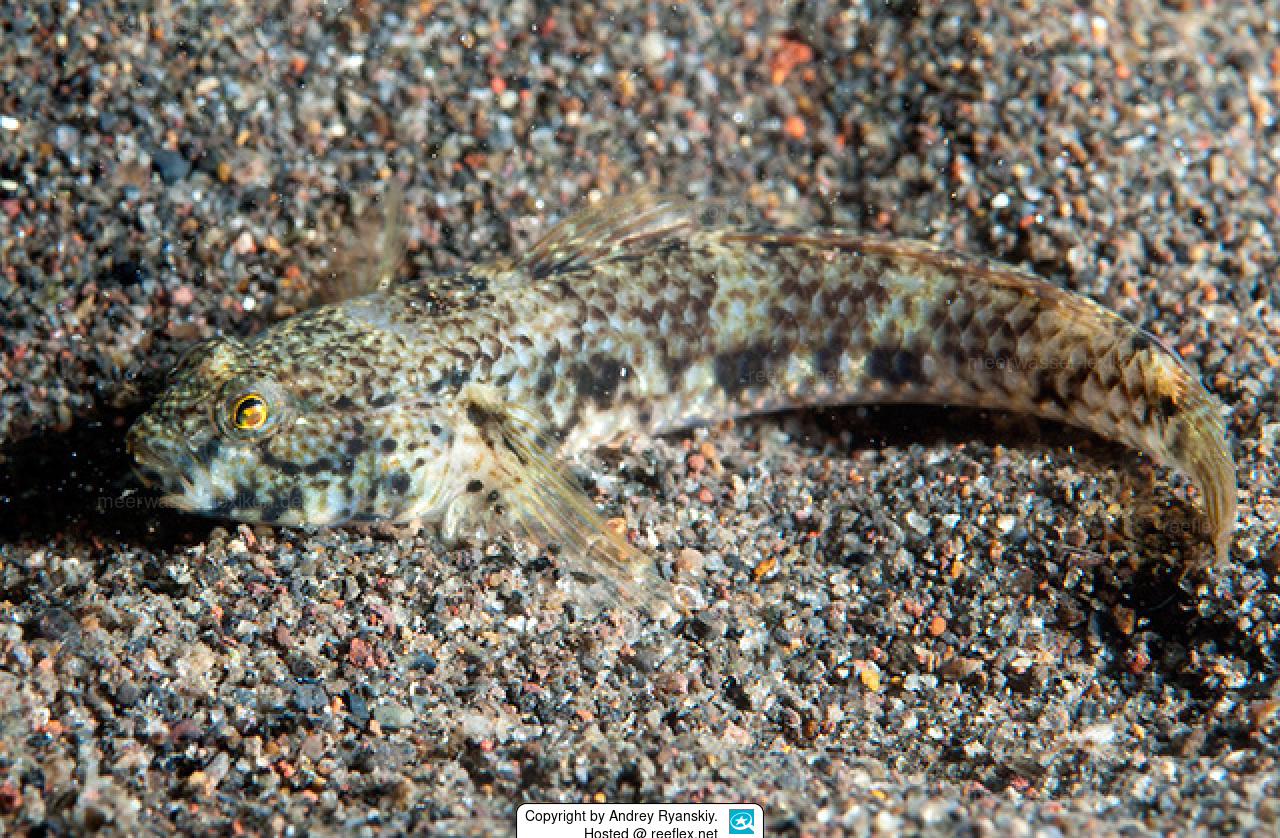Info
The goby Drombus triangularis inhabits seagrass beds, mangroves and muddy-sandy-silty areas near reefs.
The fish may share burrows with alpine mud crabs.
Evidence from Mozambique and the western Indian Ocean is probably Drombus simulus!?
Color: Head and body are dark with irregular speckles; there is a yellow triangular spot on the top of the pectoral base.
The species name "triangularis" refers to the yellow, triangular spot on the upper side of the thoracic base.
Synonyms::
Acentrogobius bontii triangularis (Weber, 1909)
Acentrogobius elberti Popta, 1921
Acentrogobius oligactis Bleeker, 1875
Acentrogobius triangularis (Weber, 1909)
Ctenogobius triangularis (Weber, 1909)
Gobius triangularis Weber, 1909
Jumping guard
A jumping guard prevents (nocturnal) fish from jumping out.
Wrasses, blennies, hawkfishs and gobies jump out of an unprotected tank in fright if their night rest is disturbed, unfortunately these jumpers are found dried up in the morning on carpets, glass edges or later behind the tank.
https://www.korallenriff.de/en/article/1925_5_Jump_Protection_Solutions_for_Fish_in_the_Aquarium__5_Net_Covers.html
A small night light also helps, as it provides the fish with a means of orientation in the dark!
The fish may share burrows with alpine mud crabs.
Evidence from Mozambique and the western Indian Ocean is probably Drombus simulus!?
Color: Head and body are dark with irregular speckles; there is a yellow triangular spot on the top of the pectoral base.
The species name "triangularis" refers to the yellow, triangular spot on the upper side of the thoracic base.
Synonyms::
Acentrogobius bontii triangularis (Weber, 1909)
Acentrogobius elberti Popta, 1921
Acentrogobius oligactis Bleeker, 1875
Acentrogobius triangularis (Weber, 1909)
Ctenogobius triangularis (Weber, 1909)
Gobius triangularis Weber, 1909
Jumping guard
A jumping guard prevents (nocturnal) fish from jumping out.
Wrasses, blennies, hawkfishs and gobies jump out of an unprotected tank in fright if their night rest is disturbed, unfortunately these jumpers are found dried up in the morning on carpets, glass edges or later behind the tank.
https://www.korallenriff.de/en/article/1925_5_Jump_Protection_Solutions_for_Fish_in_the_Aquarium__5_Net_Covers.html
A small night light also helps, as it provides the fish with a means of orientation in the dark!







 Andrey Ryanskiy, Russland
Andrey Ryanskiy, Russland


